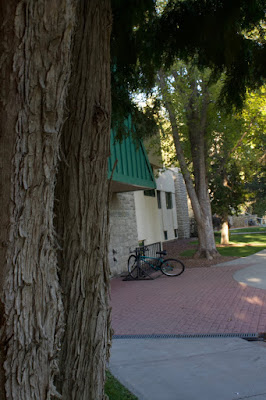The 12 steps include:
1. Finding a Dark Sky: As I had thought, the author suggests to find an area without a lot of light pollution. One of the tips with this that I hadn't thought about was to make sure there isn't a full moon.
2. Knowing When and Where to Look: As it turns out there is an optimal time to capture the Milky Way in the Northern Hemisphere. This time happens to be between the months of February and September so unfortunately the time for me to shoot that is almost up.
3.Use a Digital Camera with Good High ISO Capabilities: this one did seem a a little obvious to me just because without a high ISO capability, you won't get a very good picture
4.Using a Fast Wide Angle Lens: the maximum aperture of at least f/2.8
5. Using a Tripod
6. Use Live View: I had no idea that this was an option on some cameras. Or maybe I know it as something different, either way, focusing on one bright star will help capture the distance
7. Staring with an ISO of 3200
8. Setting a Long Shutter Speed: This along with the tripod should help keep everything in focus.
9. Setting a Wide Open Aperture
10. Compose the Shot: add a little flare by capturing a building or something stationary in the picture along with the sky.
11. Getting a Satisfactory Exposure: this may take a few times to get right but the more practice the better right? Little includes that "If there’s too much noise, simply decrease the ISO. If the shot is overexposed, check your surroundings for light pollution; decrease shutter speed; stop down the lens; or decrease ISO. If it’s underexposed, make sure you’re using the widest aperture on your lens; increase shutter speed (but beware of star trails forming); increase ISO, " which will be really helpful to reference later.
12.Process the picture which include the editing process.
There are a lot of tips and tricks that I can not wait to try and use! Milky Way From The Alabama Hills Photo by John Lemieux, is one of the photos from the article that I though was gorgeous!





